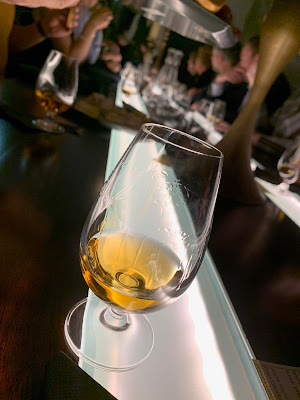Will Travel for Wine: 4 California Viticultural Regions to Visit in 2020
We’ll dedicate most of the ink here this year to touting Santa Barbara and all its wine wonders. Our region may, in fact, be the most diverse viticultural region in all of California, and home to many of its most talented wine growers. But California is vast, home to 100-plus AVAs and more than a half-million acres of wine grapes. So, to ensure that our sipping doesn’t become overly provincial – and to broaden not only our own wine savvy but our appreciation of California’s enological treasure trove – here are four other Golden State regions well worth the travel in 2020.
 |
| South Coast Winery Resort in Temecula offers overnight stays |
Temecula and San Diego: Yes, there’s an attractive and burgeoning wine region south of LA. Viticulturally speaking, Temecula has gone through some growing pains in the last couple of decades, but the wine country experience it’s created recently – including rolling estates, vineyard-side B&Bs and unique events like the annual Balloon & Wine Festival each spring – makes this a bona fide wine lover’s destination. There are more than 40 wineries in the Temecula Valley, many of which win attention for sangiovese, syrah, zinfandel, tempranillo and cabernet sauvignon. Just south, northern San Diego County, where Franciscans planted grapevines as far back as the 1700s, offers its own wine country experience; you’ll find dozens of small wineries, actually, near inland locales like Fallbrook, Ramona and Escondido.
Lodi: Family-run farms define this laid-back wen region, many of them in the hands of fourth- and fifth-generation farmers whose predecessors survived Prohibition under the law’s legal home-winemaking provision. Many of those older vines grow zinfandel – more than 40% of California’s premium zin grows here and the annual Lodi ZinFest in May is a huge draw. Cabernet and merlot also flourish in this predominantly red grape zone, along with some 100 other Spanish, Portuguese, Italian, German and French varieties. Lodi Wine Country is located 100 miles inland from San Francisco Bay, where the Sacramento and San Joaquin Valleys converge, making a day trip from our state’s capital super easy.
 |
| The original water tower at Mendocino Co.'s Handley Cellars is a recognizable landmark |
Mendocino Co.: This lovely coastal haven north of Sonoma and a two-plus-hour drive from San Francisco is covered in redwoods; in fact, you’ll find the world’s tallest living tree here – a stunning 370 feet in height. Grapevines thrive here, too, of course, to the tune of more than 500 vineyards and an impressive one-third of California’s total organic wine grape acreage. Red grapes rule here – pinot noir, cabernet sauvignon and zinfandel, mostly – with chardonnay and sauvignon blanc as the predominant whites. Some 90 miles of rugged coastline, two dozen national and state parks and a bevy of pretty town in valleys like Redwood, Anderson and Potter make a long weekend here a no-brainer. After grapes, Mendocino’s top crop is cannabis.
Santa Cruz Mountains: Altitude variation helped distinguish this AVA when it was established in 1981, with a range of 400 to 3200 feet. Set west of San Jose and southwest of San Francisco Bay, the cool climate and rugged terrain here help pinot noir and chardonnay thrive. Visitors will find a slew of special cabernet, merlot and zinfandel projects here, too. Of the region’s 60-plus wineries, Bonny Doon is among the most recognizable, set right along Highway 1 and home to a museum and rotating art displays. And Ridge Vineyards’ Monte Bello Tasting Room in Cupertino is home to lovely gardens and picnic areas. There are plenty of boutique overnight options in this AVA, which includes towns like Santa Cruz and Los Gatos.
###



Comments
Post a Comment